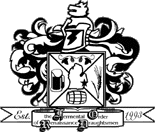 |
 |
 |
 |
 |
 |
| January 2007 |
Fermental Order of Renaissance Draughtsmen | Volume 16 Number 1 |
Happy New Year ! The next meeting will be held on Tuesday, January 23 at the Fort Street Brewery. As usual, the thirsty hardcore who want dinner will start arriving around 5PM, people will drift in for an hour or so, and we will start our meeting around 6PM.The Brewery is located at 1660 Fort St. Lincoln Park, MI 48146 SW Corner of Fort St. & Warwick - 2 blocks N of Southfield Rd. Meeting in the dining area (5:30 pm - 7:00 pm) Homebrews in the brewery area only!!!!!!!! Phone 313-389-9620 http://www.fortstreetbrewery.com/index.html
Keith Michaluk
This month's competition style is an Open Beer Style. Any BJCP Style Only will be judged; however, only beers not entered in prior OPEN competitions will qualify for awards and points.
The editor has htmlized the judging schedule originally in late last year's newsletter. Here it is
| February 2007 | Open Styles |
| March 2007 | BJCP Categories 9A, 9B, 9C Scottish Ales |
| April 2007 | BJCP Category 20 Fruit Beers |
| May 2007 | BJCP Category 23* Extract Beers |
| June 2007 | BJCP Category 2 Pilsners |
Tony Tantillo
Can someone e-mail me the list of officers? As usual I forgot to copy this down last month and need to update the newsletter.
Chris Frey
Editor's Note: this was the experiment that Chris presented to us , and we judged, at the December meeting.
1/20/2007 style="font-weight: bold; margin-left: auto; margin-right: auto" Same Wort –Same Yeast - Different Fermenters
The question was asked by Gary Glass, Director of the AHA: will using different Fermenters produce noticeable differences in the resulting beer? Breweries have utilized a variety of fermenter shapes and materials. But at the homebrew level, can differences in materials and shapes make any perceivable differences?
In devising a potential “experiment”, several AHA Governing Committee members reviewed the idea and we settled on a recipe recommendation from Jeff Renner, a yeast strain recommendation from Dave Logsdon, and the use of four different Fermenters – a stainless steel conical, a plastic bucket, an open and an air-locked glass carboy. Dave Houseman communicated with and got buy in from the “Calibrator Corner” to review the final product. I also utilized the assistance of 3 Southeast Michigan homebrew clubs to gain additional feedback.
To be a true "experiment", all variables would have to be closely controlled, and the test would need to be run a number of times to show the results occurring the same way, over and over. As a homebrewer with limited resources, this is really a single trial observation, a collection of subjective attributes that could lead to future attempts at refinement and replication, rather than a true experiment. However, we did gain insights and can make some suppositions.
The recipe:
The recipe was fairly straight forward. It was agreed that a smaller brew, with little complexity, would help highlight any potential perceived differences. A Special Bitter was selected and ingredients for a 20 gallon batch included:
27 pounds of Marris Otter Pale Ale malt
4 pounds of L Munich
3 ounces of Chocolate malt
2 ounces Willamette (5.2%AA) – first wort hopped
2 ounces Willamette (5.2%AA) – 5 minutes
WYeast 1187 Ringwood Ale Yeast
The water was treated with Camden tablets and gypsum, and the grains were doughed in at , held an hour, then rose to and held for 15 minutes. The grains were sparged for about 90 minutes to collect approx. 22+ gallons of pre-boil wort. A pico-brewing system® was used, and wort was re-circulated between the two 15.5 gallon boil kettles to ensure uniformity.
The Controls:
Several variables were controlled to minimize potential differences between the fermenting batches. These included:
Adding one gallon yeast starter into the boil kettles once the wort had been chilled to mid 70’s and re-circulated between the two kettles for 5 minutes.
Ensured each fermenter was PBW washed and sanitized with Iodophor (a new plastic fermentation bucket was utilized, and therefore did not get cleaned with PBW).
Each fermentation vessel received 3 minutes of oxygen.
Each vessel was placed 3 feet from the floor, bunched next to each other, in the basement where ambient temperature remained constant for the several weeks of fermentation.
All beers were racked to glass secondaries after 13 days and bottled 10 days later.
All beers were monitored with internal thermo probes, sending and recording precise temperature information, by the second, to a PC during the first five days to determine if there were different fermentation temperatures occurring (a tip of the hat to Matt Becker of the AABG for supplying this truly geeky set-up!).
Temperatures for the stainless steel conical fermenter hit the highest primary fermentation temps, with plastic in the middle and the two glass carboys stayed the coolest. After 5 days, they remained at - 63o-64o (ambient basement temp) until bottling.
Results:
The beer was brewed on 10-29-06 and had a starting gravity of 1.052. They were bottled on 11/21/06 and the final gravities were:
# 1 Stainless 1.012
# 2 Open (Glass) 1.014
# 3 Plastic 1.015
# 4 Closed (Glass) 1.015
Perceived differences:
The final step was to taste these and see if there were any perceived differences. I choose the criteria listed in the charts below.
The first chart has the collective feedback from the members of the Downriver Brewers Guild, the Ann Arbor Brewers Guild and the F.O.R.D. homebrew clubs. These were all compared within a week of each other. While there are a number of BJCP’s within these clubs, the experience ranged from beginner to pro. The numbers do not add up as some were silent to a particular item.
|
|
|
Same Wort - Same Yeast - Different Fermenters |
|
|
|||||||
|
|
|
|
|
|
|
|
|
|
|
|
|
Homebrewers |
Stainless 1 |
|
Glass - Open 2 |
Plastic 3 |
|
Glass - Closed 4 |
||||||
|
less |
equal |
more |
less |
equal |
more |
less |
equal |
more |
less |
equal |
more |
Hop aroma |
|
|
|
5 |
11 |
7 |
2 |
13 |
7 |
6 |
8 |
7 |
Hop flavor |
|
|
|
5 |
11 |
7 |
1 |
10 |
11 |
5 |
7 |
10 |
Malt character |
|
|
|
2 |
11 |
10 |
1 |
9 |
11 |
4 |
10 |
7 |
Body |
|
|
|
2 |
12 |
8 |
0 |
13 |
9 |
2 |
7 |
11 |
Sweetness |
|
|
|
6 |
10 |
7 |
6 |
10 |
6 |
7 |
7 |
6 |
Bitterness |
|
|
|
7 |
10 |
7 |
3 |
13 |
6 |
8 |
8 |
5 |
Fruitiness |
|
|
|
6 |
7 |
9 |
8 |
8 |
6 |
8 |
5 |
9 |
Additionally, I requested the assistance of the “Calibrator Corner” team of BJCP’s David Houseman, Beth Zangari, Gordon Strong and Scott Bickham, to take advantage of their collective experience. In both data collections, people were not told about the final gravities or the fermenter until after the feedback was collected.
|
|
|
Same Wort - Same Yeast - Different Fermenters |
|
|
|||||||
|
|
|
|
|
|
|
|
|
|
|
|
|
Calibrator |
Stainless 1 |
|
Glass - Open 2 |
Plastic 3 |
|
Glass - Closed 4 |
||||||
BJCP’s |
less |
equal |
more |
less |
equal |
more |
less |
equal |
more |
less |
equal |
more |
Hop aroma |
|
|
|
1 |
1 |
1 |
|
1 |
2 |
|
1 |
2 |
Hop flavor |
|
|
|
|
3 |
|
|
1 |
2 |
|
|
3 |
Malt character |
|
|
|
|
2 |
1 |
|
2 |
1 |
1 |
1 |
1 |
Body |
|
|
|
2 |
|
1 |
|
3 |
|
1 |
1 |
1 |
Sweetness |
|
|
|
1 |
1 |
1 |
1 |
1 |
1 |
1 |
2 |
|
Bitterness |
|
|
|
1 |
1 |
1 |
|
2 |
1 |
|
1 |
2 |
Fruitiness |
|
|
|
|
|
2 |
1 |
1 |
1 |
|
1 |
2 |
While the Calibrators had some distinctly different perceptions, the scores provided for these brews were within one point of each other – pretty impressive!
I utilized the stainless steel fermenter as the “calibrator” for everyone, as it fermented the hottest and finished with the lowest final gravity, so I felt if there was one that would have a pronounced difference between the samples, this was it. Most people commented on its extreme diacetyl flavor from this sample. The yeast (Ringwood) is notorious for this, and apparently the difference of just a few degrees significantly accentuated the production of this flavor.
So, what is learned? First, perception is a slippery concept. Even those with very refined palates can have differences on opinions when it comes to perception. Again, while this work is hardly scientific, it did show that there are significant perceived differences in the measured variables between the fermenters.
There are a number of potential causal factors that could be at work here, such as:
Exothermic heat dissipated differently between fermenters due to differing materials of the fermenters )(steel, glass and plastic)
Pressure of CO2 buildup during primary fermentation (open versus closed)
Fermenter geometry - sloping conical presents more surface area for the yeast, which increases the exposed layer of yeast in the existing yeast bed.
Oxygen uptake through plastic, and open fermenter versus sealed glass and steel)
In the end, there is still a lot that can be learned regarding the differences that a variety of fermenter materials and shapemake to our beer. What was clear from this observation was that there are indeed perceivable differences, even at the homebrew's level of production. I have encouraged homebrewers for years to play with each batch, be it utilizing different yeasts within the same wort, using different temperatures for fermentation, or just adding and reducing a single ingredient to become familiar with its unique characteristic. I will continue to encourage this behavior and look forward to my next foray into "Same wort…Different?"!
Tony Tantillo, Chris Frey
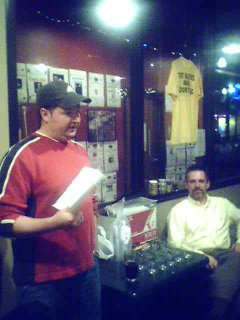 |
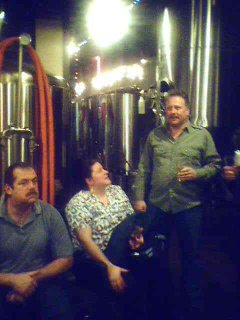 |
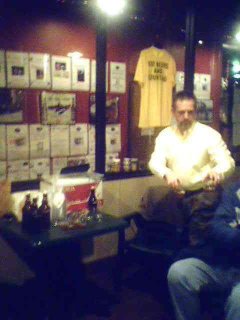 |
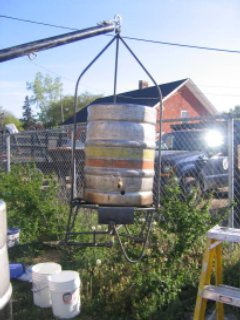 |
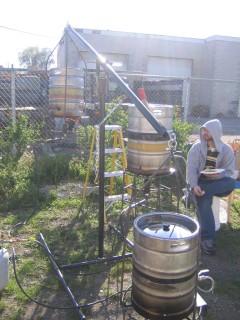 |
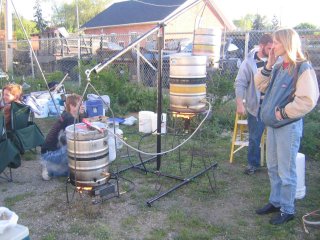 |
Next month we will have an club competition with the style being Scottish Ales BJCP categories 9A, 9B, and 9C .
| Beer Events, Meetings &
Competitions
Bob Barrett |
 |
| Tuesday, January 23 - F.O.R.D meeting at Fort Street Brewery 1660 Fort St. Lincoln Park, MI 48146 SW Corner of Fort St. & Warwick - 2 blocks N of Southfield Rd. Meeting in the dining area (5:30 pm - 7:00 pm) Homebrews in the brewery area only!!!!!!!! Phone 313-389-9620 http://www.fortstreetbrewery.com/index.html Club Competition Style Any BJCP Style Only beers not entered in prior OPEN competitions will qualify for awards and points. |
| Thursday, February 8 - Entry deadline for the AHA Club Only Competition Low Gravity Beers http://www.beertown.org/homebrewing/schedule.html |
| Tuesday, February 27 - F.O.R.D meeting at Fort Street Brewery 1660 Fort St. Lincoln Park, MI 48146 SW Corner of Fort St. & Warwick - 2 blocks N of Southfield Rd. Meeting in the dining area (5:30 pm - 7:00 pm) Homebrews in the brewery area only!!!!!!!! Phone 313-389-9620 http://www.fortstreetbrewery.com/index.html Club Competition Style: Scottish Ales BJCP categories 9A, 9B, and 9C . |
| Tuesday, March 27 - F.O.R.D meeting at Fort Street Brewery 1660 Fort St. Lincoln Park, MI 48146 SW Corner of Fort St. & Warwick - 2 blocks N of Southfield Rd. Meeting in the dining area (5:30 pm - 7:00 pm) Homebrews in the brewery area only!!!!!!!! Phone 313-389-9620 http://www.fortstreetbrewery.com/index.html Club Competition Style Fruit Beers Category 20 |
| TBD - Entry deadline for the AHA Club Only Competition Scottish Ales Category 9A, 9B, 9C http://www.beertown.org/homebrewing/schedule.html |
| April TBD - Entry deadline for American Homebrewers Association National Homebrew Competition http://www.beertown.org/events/nhc/index.html Entries due early April 2007 First round judging end of April 2007 |
| Tuesday, April 24 - F.O.R.D meeting at Fort Street Brewery 1660 Fort St. Lincoln Park, MI 48146 SW Corner of Fort St. & Warwick - 2 blocks N of Southfield Rd. Meeting in the dining area (5:30 pm - 7:00 pm) Homebrews in the brewery area only!!!!!!!! Phone 313-389-9620 http://www.fortstreetbrewery.com/index.html Club Competition Style Extract Beers. Category 23 is the BJCP category for specialy beers. |
| Friday, May 4 - Entry deadline for the AHA Club Only Competition Extract Beers Category 23 http://www.beertown.org/homebrewing/schedule.html |
| Saturday, May 5 - National Home Brew Day http://www.beertown.org/events/bigbrew/index.html . |
| TBD - Earlybird Registration Deadline for National Homebrewers Conference. |
| Tuesday, May 22 - F.O.R.D meeting at Fort Street Brewery 1660 Fort St. Lincoln Park, MI 48146 SW Corner of Fort St. & Warwick - 2 blocks N of Southfield Rd. Meeting in the dining area (5:30 pm - 7:00 pm) Homebrews in the brewery area only!!!!!!!! Phone 313-389-9620 http://www.fortstreetbrewery.com/index.html Club Competition Style Pilsner BJCP Category 2. |
| June 21 - 23 - 29th Annual National Homebrewers Conference Denver, Colorado http://www.beertown.org/events/hbc/index.html |
| Tuesday, June 26 - F.O.R.D meeting at Fort Street Brewery 1660 Fort St. Lincoln Park, MI 48146 SW Corner of Fort St. & Warwick - 2 blocks N of Southfield Rd. Meeting in the dining area (5:30 pm - 7:00 pm) Homebrews in the brewery area only!!!!!!!! Phone 313-389-9620 http://www.fortstreetbrewery.com/index.html Club Competition Style ??? |
| July 2007 - AMERICAN BEER MONTH http://www.americanbeermonth.com/ |
contributed by Chris Frey
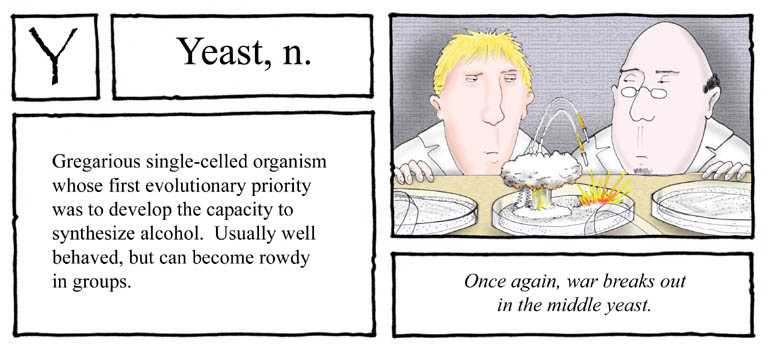
| Ye Olde Brew
News published by the F.O.R.D. Homebrew Club |
|
| Editor: Tony Tantillo Contributors: Club Officers: |
F.O.R.D. is a private, non-profit organization of
homebrewers. The main goal of this club is to promote awareness and
appreciation of the quality and variety of beer; to share information
regarding technique, equipment and skill required to brew quality
homemade beer; and to encourage responsible use of beer as an
alcohol-containing beverage. Howard Klix Jr. 24737 Cushing Ave Eastpointe, MI 48021 Phone: (586) 779-1445 Visit our website at: http://www.be.ford.com/brewers/
current circulation... 125 |